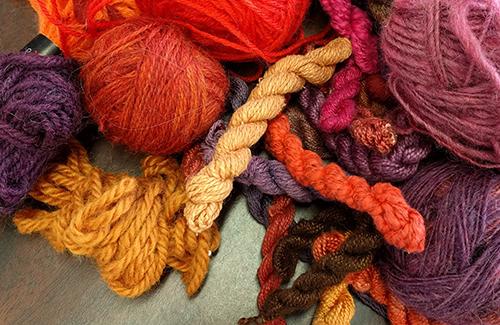Want to Learn a New Skill? Try Weaving!
By Kate Inman @ cal Poly (Suzie's Grand-daughter)
Shelter-in-place has many people around the world getting creative with activities you can do at home. If you're tired of watching Netflix or baking, try using this time to pick up a new skill - weaving! Weaving is somewhere in the middle of sewing and knitting, but this retro art is making a comeback and is an activity you can even do with friends over FaceTime. Whether your living room wall needs a new decoration or your bedroom could use some sprucing up, weaving is a great way to express your creativity and try something new! To start your weaving journey you need a few basic supplies, which you will likely be able to find around your house!
1.Buy or Make a Loom
 The first thing you need is a loom, which is a wooden frame with nails or ridges where the base of your wall tapestry's strings will lie. If you can't go to the store and buy one, make it! The simplest method is to deconstruct an unused canvas. By loosening the staples holding the cloth to the wooden frame, you can separate the pieces and have the base of your new loom. Then, using a ruler and pencil, marking out one and a half-inch lines that will be your guide for placing the "hooks." Nails can be used for the hooks, which you hammer in place at the measured lines on opposite ends of the frame. And like that, you have made a loom!
|
| 2.Start Adding String
Next, find some thin, cotton string and start by wrapping it around the nails. Using the string, you can change how narrow or wide your finished piece will be by wrapping the string around one or multiple nails.

|
| 3.Choose your colors
Now this is the fun part! Choose lots of fun colors that stand out and use your creativity to think of good combinations and designs. A good place to start for beginners is using complementary color combinations like blue and orange, red and green and yellow and purple. If you're more advanced or want to explore other color combinations, try analogous or split complementary color combinations.

|
| 4.Now, Get Weaving!
Using the same cotton yarn as before, you will want to attach a hem stitch to hold your wall hanging together when it is done. One technique for beginners is an over under stitch, which consists of using a piece of yarn that is around six times the length of your loom (it will shrink as you weave it) and threading it over and under each cotton string attached to the nails. Once you finish one row, you can loop the string around and do the same pattern but in reverse. So instead of over under, you will go under over. You can keep doing this until you are out of yarn, and then add a different color or more of the same.

|
| 5.Try New Techniques
Once you're comfortable with the basics of weaving, try more complicated techniques like the Rya Loop. This stitch requires coordination on the loom mixed with creativity. By creating a base knot in the center of your weave, you will then leave some slack as you pull through the rest of the yarn in a crescent shape to secure the loop. This technique is very versatile as you can create different size loops to get the desired effect you are going for.
 One fun way to make this technique even more unique is to cut through the loops to create a fringe once you are done with your pattern.
If you're looking for a new skill to learn while sheltering-in-place, weaving is a great way to express your creativity and relax. Weaving is a skill you can practice almost anywhere and is a great way to take a productive break from school.
 Happy weaving! |


